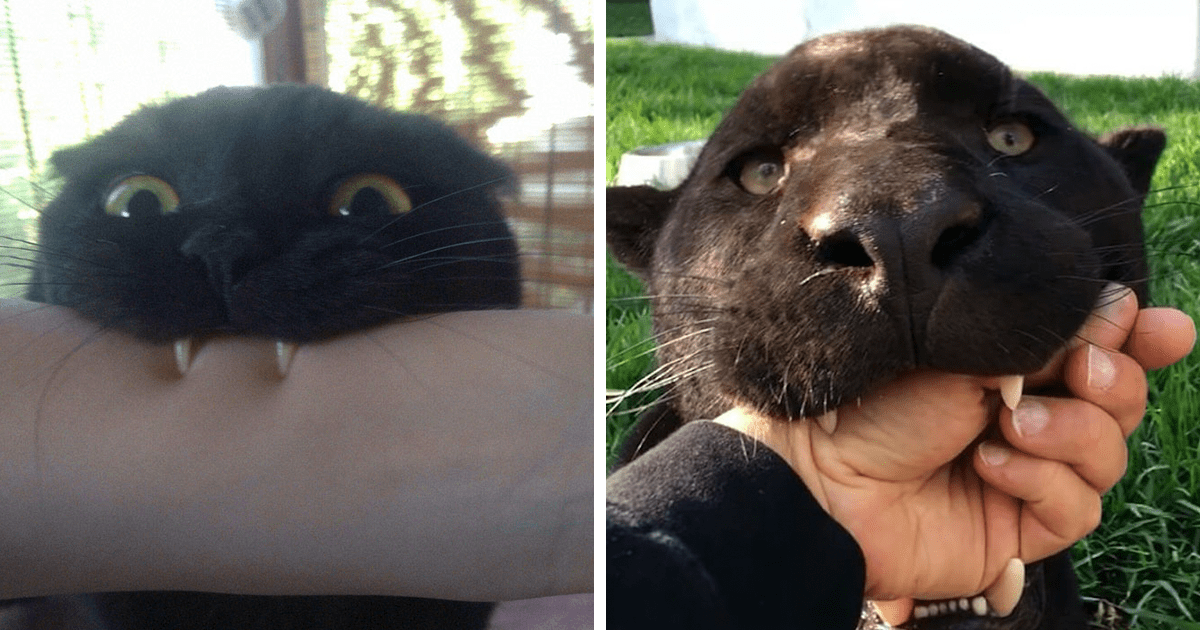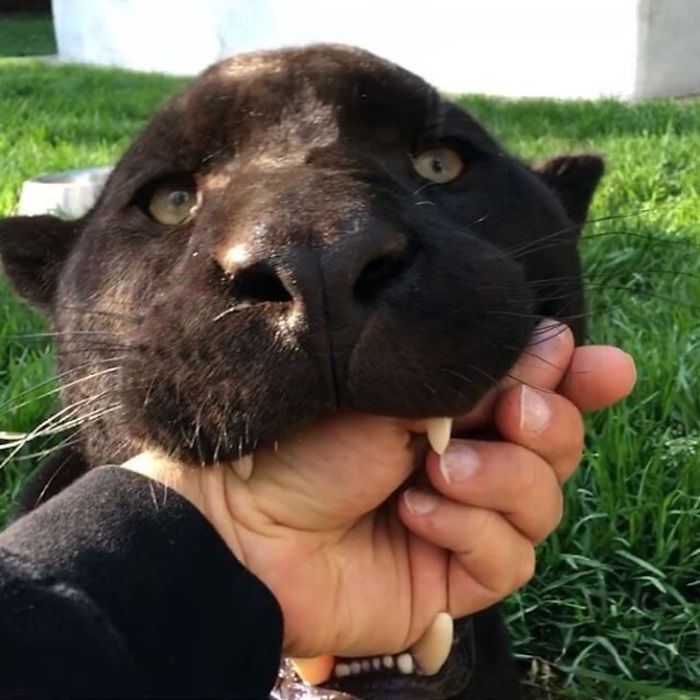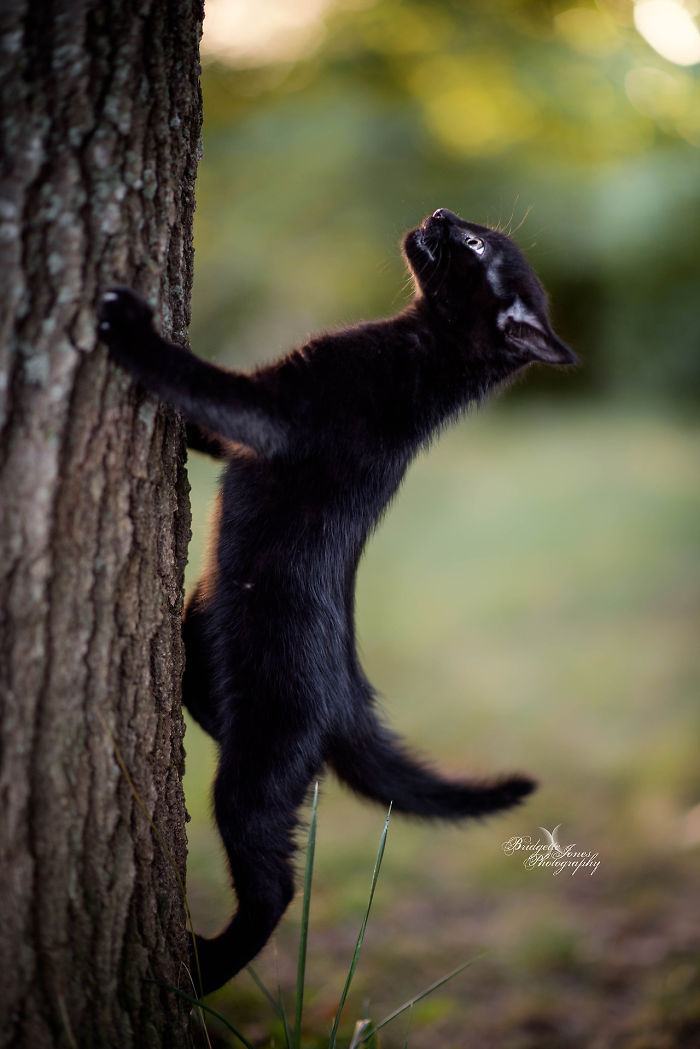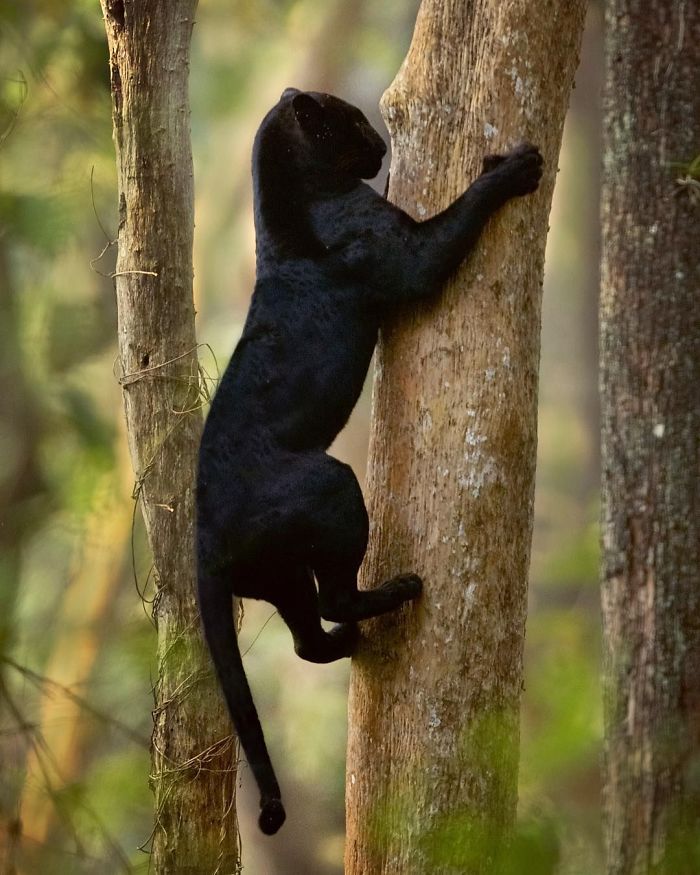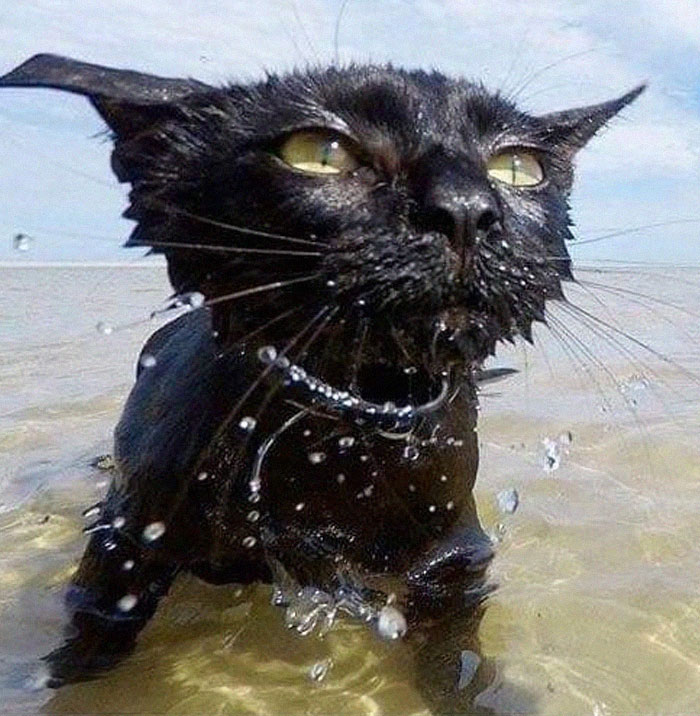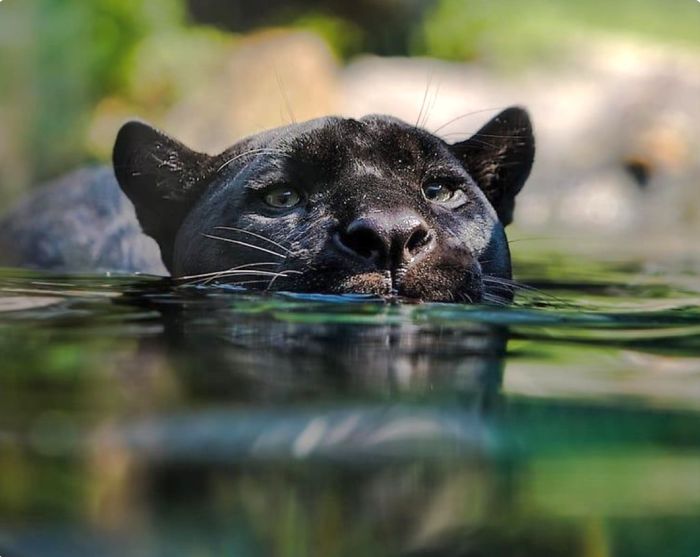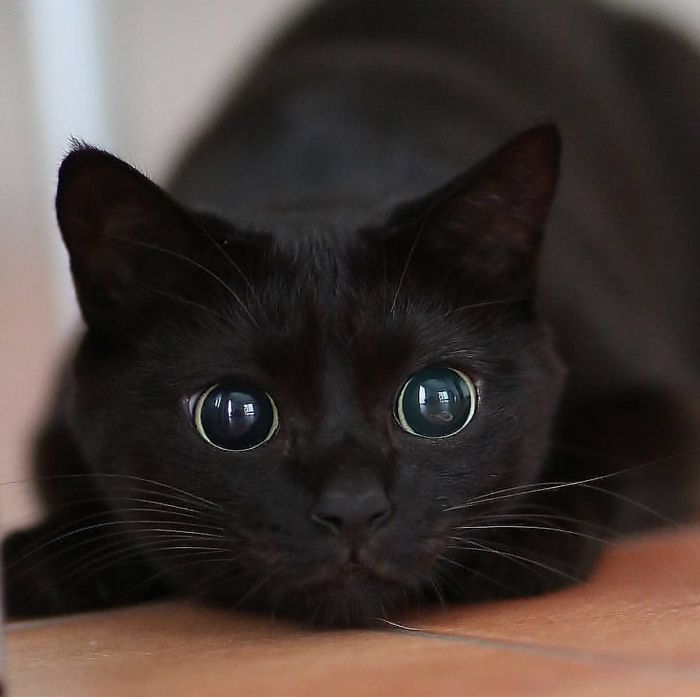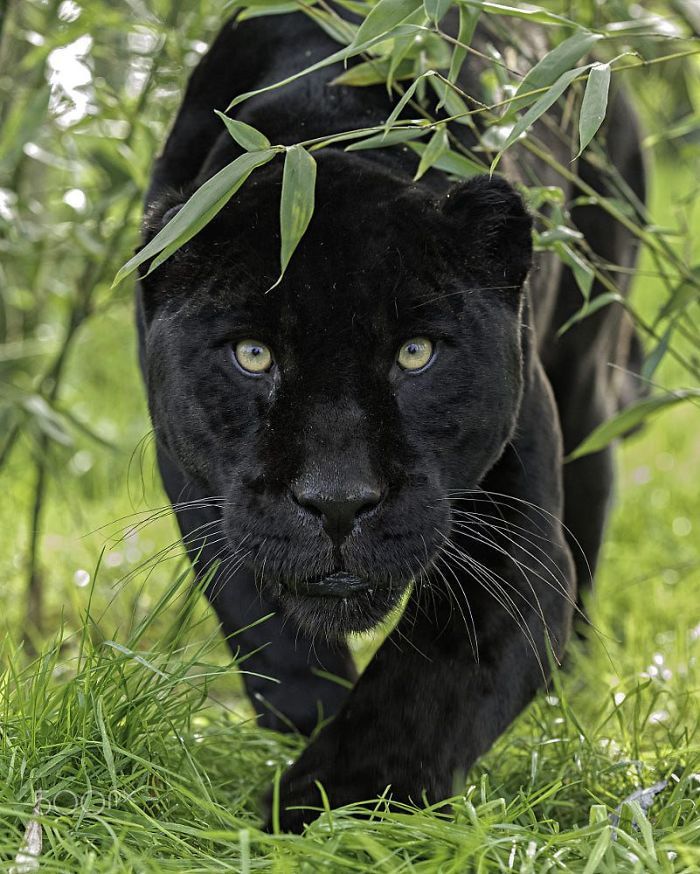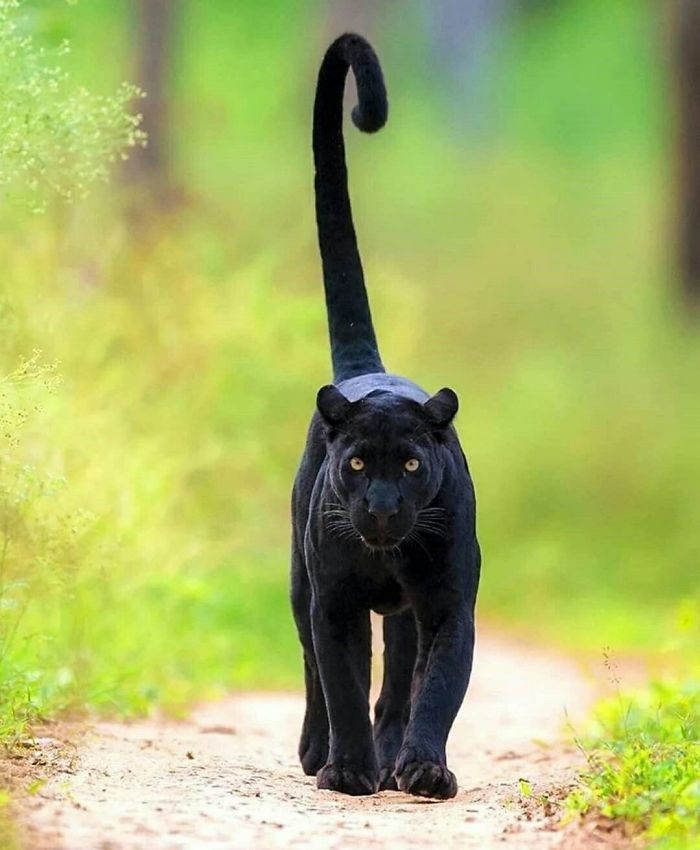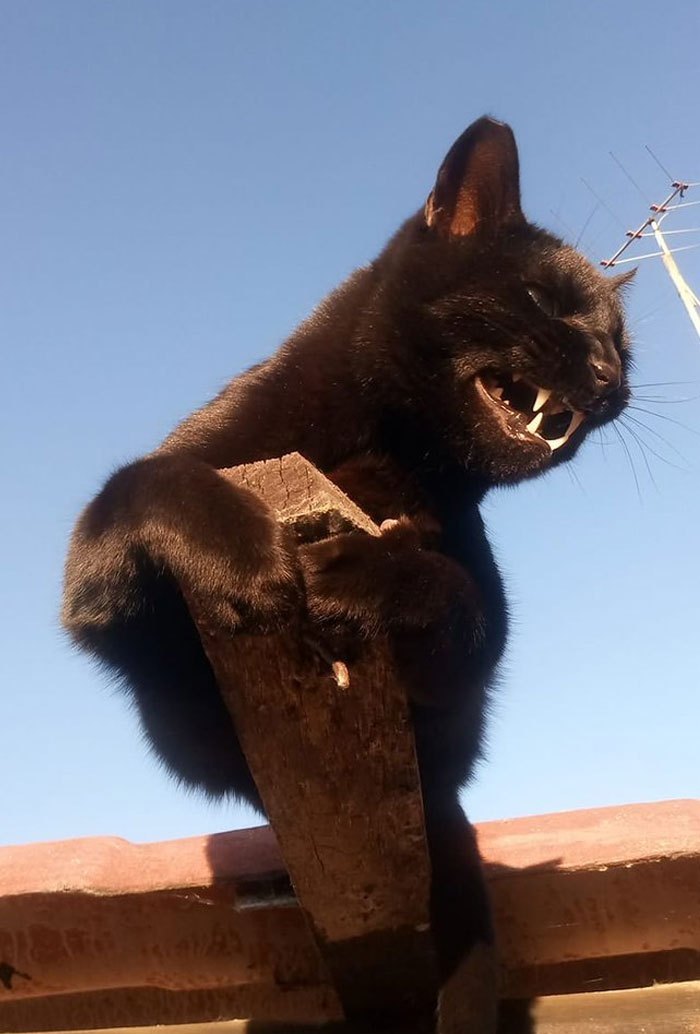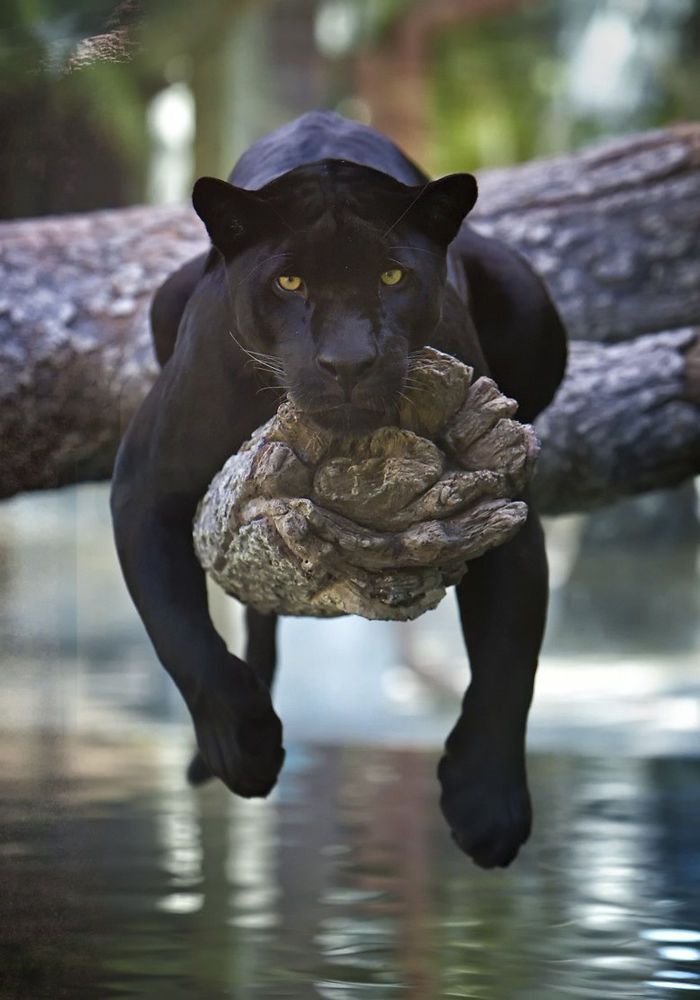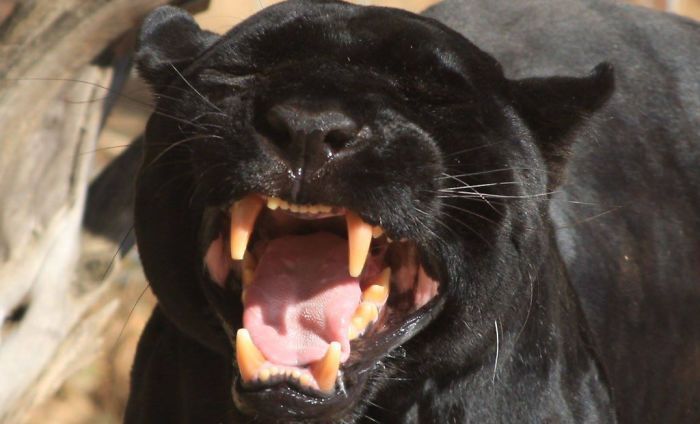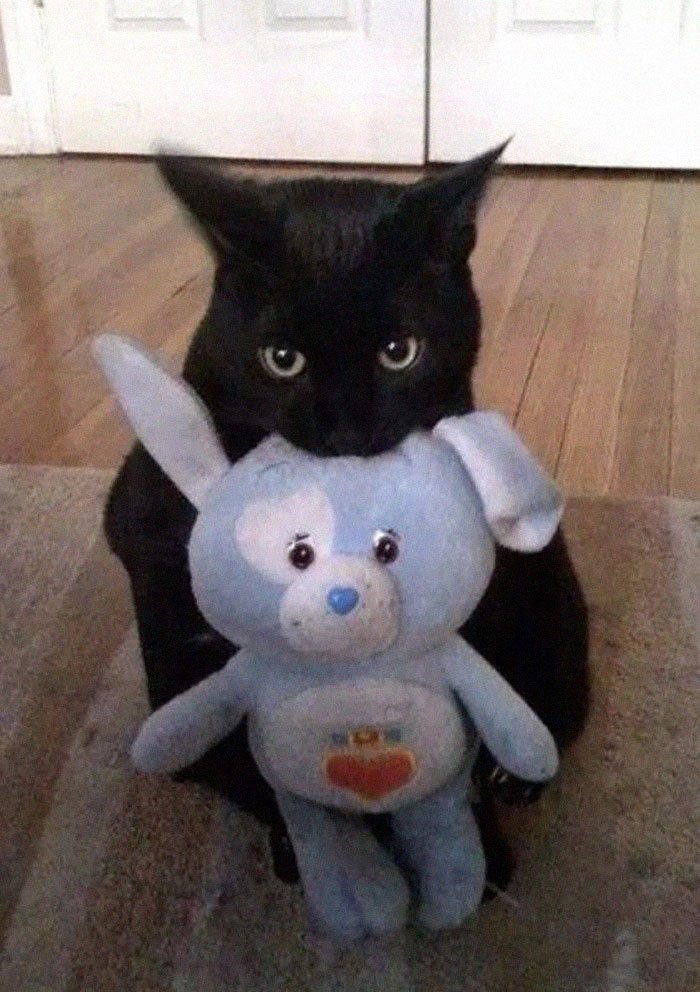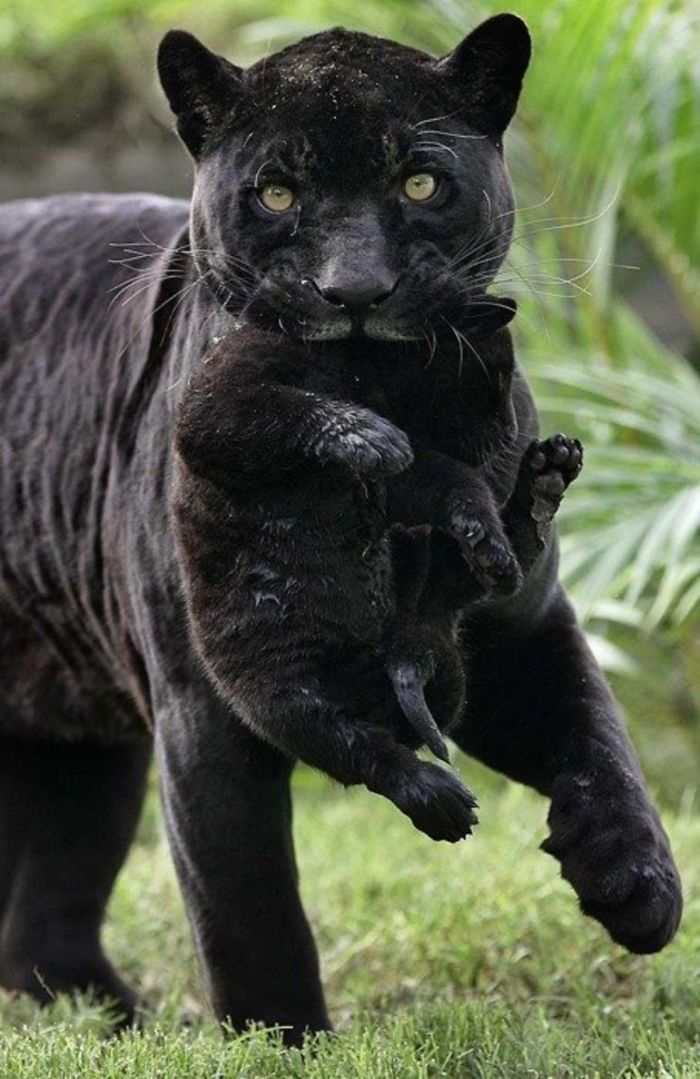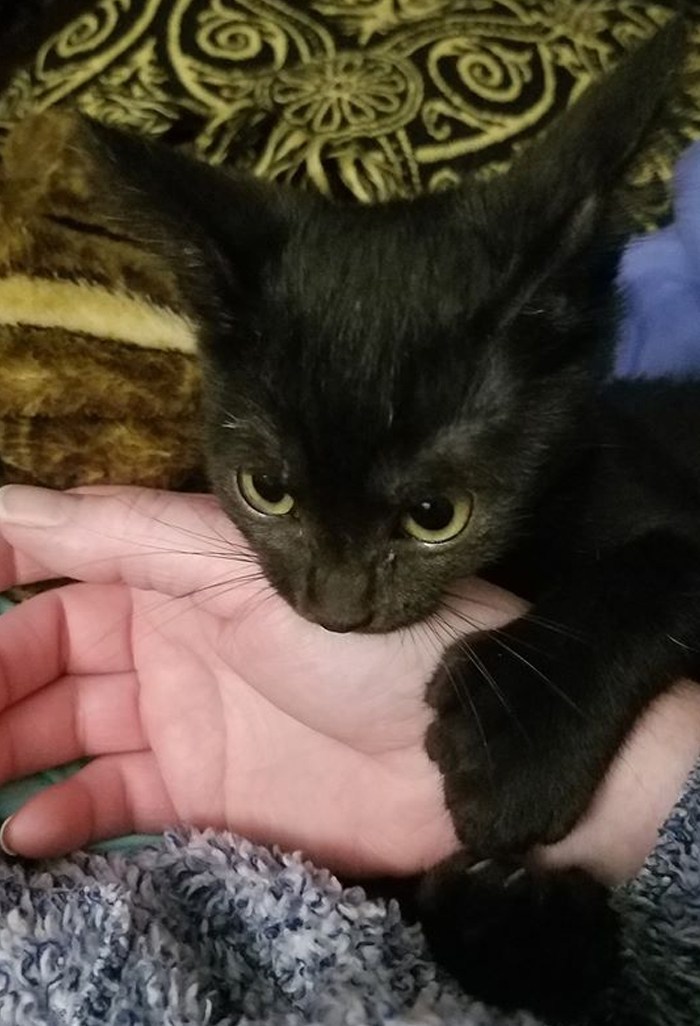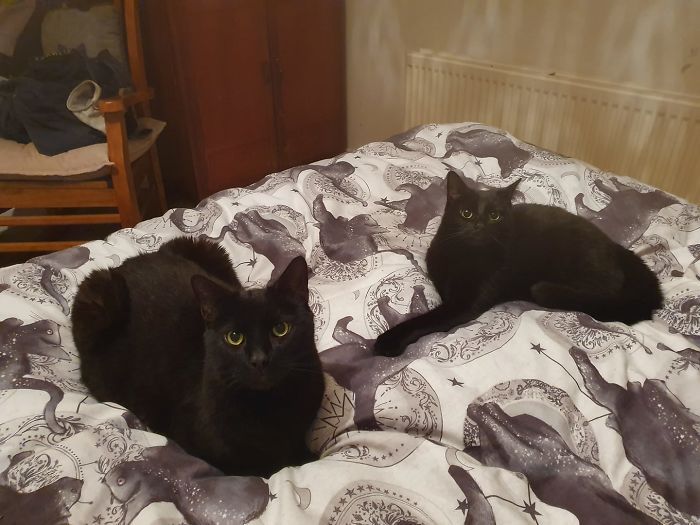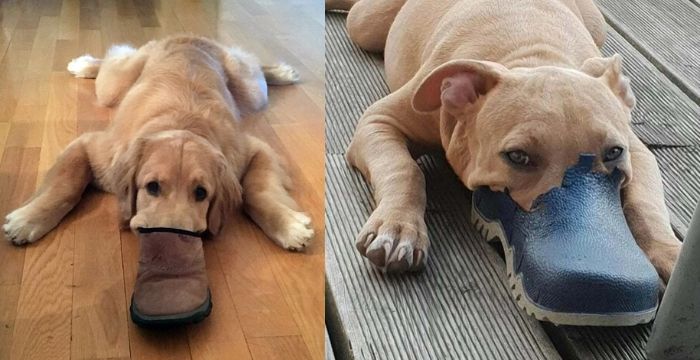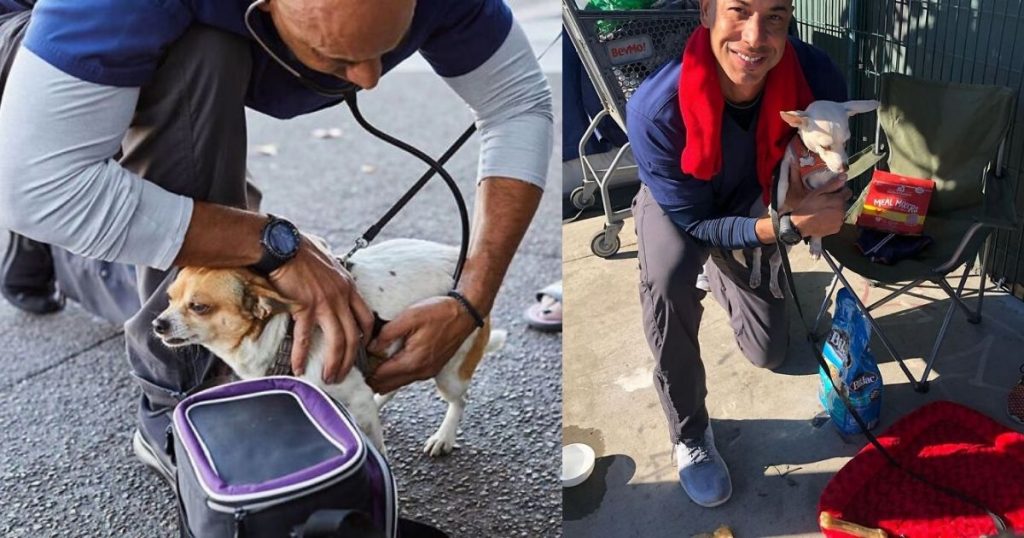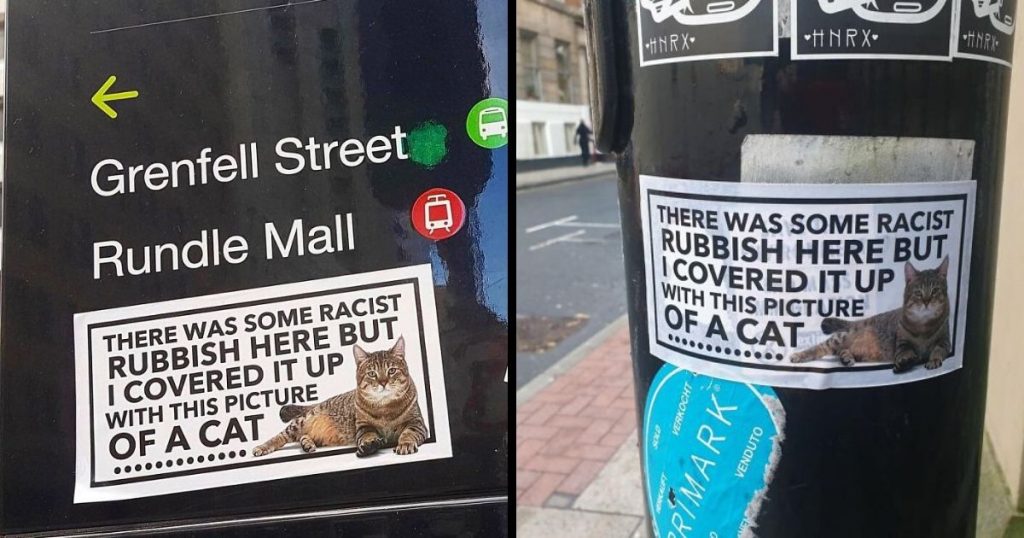We share many stories online about people living with exotic animals, perhaps after a period of rescue and recovery that left the animal unable to live in the wild. While these stories may seem inspiring and make you want to welcome a wild animal into your home, it is always important to remember that wild animals, no matter how tame they are, present much greater behavioral problems than animals bred for domestication. , and the people who care about them probably won’t show the struggles that take place behind the scenes.
If you want a pet with all the majesty and grace of the true kings of the jungle, you don’t have to look for when a simple domestic cat from your local shelter would. Here is some photography that shows how much black cats have in common with their distant relatives in the wild.
#1 They have fearsome fangs
#2They are great athletes
#3 In more ways than one
#4 They look fierce when lurking …
 Advertisements
Advertisements
#5 or on the move
#6 just hang out
#7 Beware of sharp objects.
#8 But they also have a soft side
While it’s a common anecdotal belief that black cats take longer to be adopted in shelters, as artist Jenny Jinya highlights in her viral black cat comics, the relationship between coat color and adoption rates is unclear. In an ASPCA study, black cats made up 30% of cats euthanized in shelters, but also an impressive 31% of adoptions, suggesting they may simply be among the most common coat colors born to mixed breed cats. and the most common to end up in shelters first.
It is also common for shelters not to allow black cats to be adopted before Halloween, due to the widespread belief that black cats are especially desired for ritual sacrifice. However, despite being treated as common knowledge, official reports about whether this is a confirmed practice or an urban legend are confusing, and some shelters have stopped applying the policy in the 21st century, as the modern adoption application and the interview process is dissuasive enough for people who may have a violent intent. Shelter workers are more concerned that cats living on the streets become targets of abuse.
The Guardian published tips for taking good photos of their black cat after British shelters blamed Instagram culture for low black cat adoption rates, saying potential adopters don’t consider them selfie-friendly but do they really we need advice? Surely the fact that they appear in images as amorphous black shadows with eyes is part of the appeal. It is like having a crypt for a pet. Do you have a domestic panther you would like to share photos of? Comment below!

